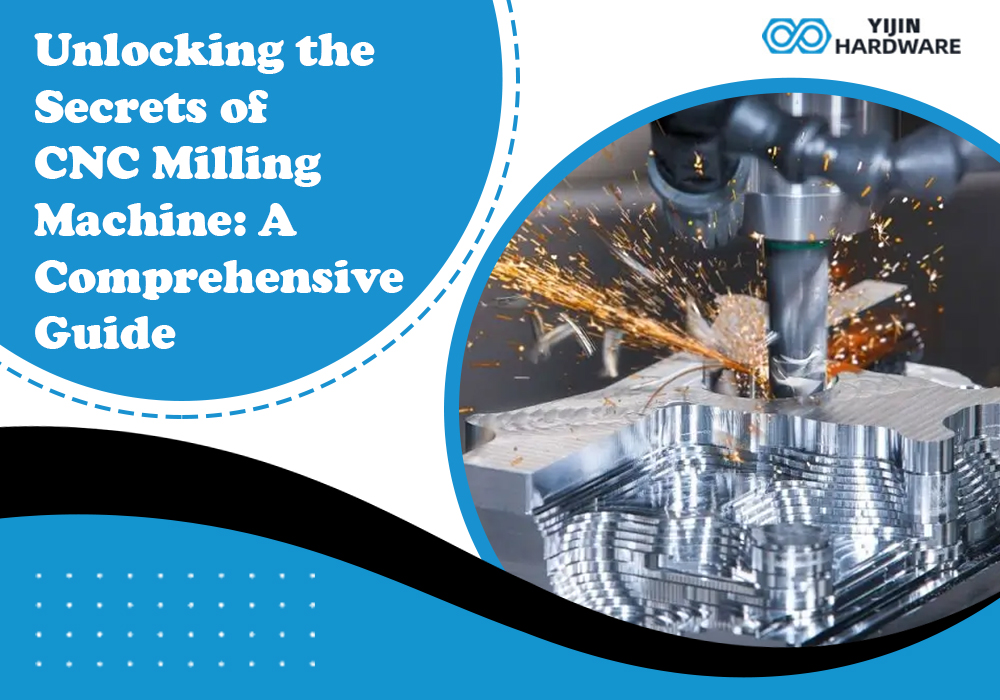
In the production and prototyping practice, CNC milling – is broadly considered that very prestigious process, which has smoothened the way of manufacturing. CNC milling is one of the subtractive processes wherein computer-controlled machine tools are utilized to eradicate material from a solid workpiece, thus producing the required part or product.
This blog is intended as the most in-depth resource for CNC milling machine information, a Comprehensive Guide to CNC Machine Tools and Accessories.
The Progression of CNC Milling: Ultimate Guide to CNC Milling Machines
CNC milling is performed through designing a model in CAD software and then converting it into G-code, which serves as input for CNC mills. This code tells the cutting tools how to move on multiple axes to remove unnecessary material. CNC milling machines offer precision and flexibility, which allows to accurately create shapes with complicated designs. These kinds of equipment are quite frequently employed through exclusive industries consisting of aerospace plus applied science the place reliability is required. Maximize your machining potential with insights from our Ultimate Guide to CNC Milling Machines.
Key Components of a Standard CNC Milling Program
A good understanding of a simple CNC milling program requires that one be introduced to the main parts of a CNC milling machine. These components work together to perform milling operations efficiently and accurately.
- The Milling Machine: The milling machine is the primary tool in CNC milling. It is comprised of several key elements including the spindle for holding the cutting tool and positive table support from whence to derive workpieces. CNC program will navigate the machine to be controlled by motors.
- Cutting Tools: They are used to cut away material from a workpiece. They come in varying shapes and different sizes to suit a particular milling activity.
- CNC Controller: The CNC controller acts as the brain of the milling machine. It interprets the G-code instructions and has control over the activities of the machine’s parts.
Comprehensive Guide to CNC Machine Tools and Accessories
Among other prevailing factors, the performance of a CNC milling machine is importantly affected by its tools along accessories. Here is a detailed explanation of some key CNC machine tools and accessories:
- Tool Holders: Tool holders protect the cutting tools in the spindle. They must provide high precision and stability to ensure accurate machining. Collet chucks, end mill holders, and shrink-fit holders are examples of prevalent kinds of tool holders.
- Work-Holding Devices: Machinists utilize work-holding devices to preserve the workpiece in place on the milling machine table. It’s vital to hold the work steady. If the piece moves while you’re working on it, it can mess up the exactitude.
- Coolant Systems: To reduce heat and prevent tool wear, coolant systems are used to cool the cutting instruments and workpieces. Furthermore, they aid in keeping the work area tidy by cleaning away chips from the cutting area.
- Probing Systems: Workpieces are evaluated and prepared for machining utilizing probing systems. They aid in precisely identifying the workpiece, guaranteeing flawless machining right from the beginning.
CNC Machine Tool Selection Guide
Picking the right CNC machine tool is mandatory for accomplishing the desired results in your milling projects. In this CNC Machine Tool Selection Guide, we are providing some factors to consider:
- Material of the Workpiece: Different materials require different cutting tools. For example, firmer materials like titanium require tougher and more sturdy cutting gears compared to softer materials like aluminum.
- Tolerance Requirements: The level of precision required for your part will dictate the type of machine and tools you need. High-precision parts may require advanced CNC machines with tighter tolerance capabilities.
- Production Volume: The volume of parts you need to produce will influence your choice of machine. High-volume production might require a machine with faster cycle times and automation capabilities.
- Complexity of Parts: If your parts have complex geometries, you’ll need a machine capable of multi-axis machining to handle the intricate movements required.
- Consistency: Once a program is generated, the CNC machine may produce identical parts over and over again with nominal variation, ensuring high reliability in production.
Conclusion
CNC milling is undoubtedly a transformative technology in the world of modern manufacturing as it provides unbeatable accuracy, efficiency, and repeatability.
If you are a beginner, then having clear ideas about CNC milling basics, overall processes, and selecting the right tools becomes more important. Unlock the secrets to precision and efficiency with our Ultimate Guide to CNC Milling Machines. For your custom CNC machining works if you partner with a reliable manufacturer such as YIJIN Hardware then chances of getting success become higher. As a reputed CNC machining manufacturer, YIJIN Hardware offers a wide range of services for custom CNC machining, Rapid prototype and production, etc.








mostbet bd2 app mostbetbangladeshbd com 10bet casino http://mostbetbangladeshbd.com .